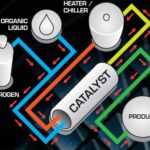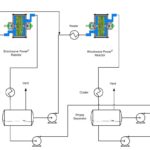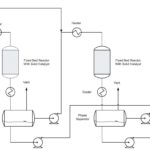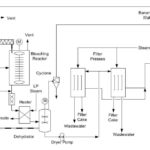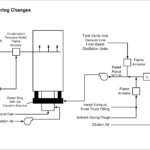Applied Catalysts is offering Catalytic Reactor Units for process intensification of Catalytic processes using their proprietary ACMC® activated carbon monolith catalyst technology. These modular turn-key systems offer enhanced productivity, selectivity and lifetime for Hydrogenation and other catalytic chemistries. Chemistry that is not equilibrium limited can be converted … [Read more...]
Transesterification – Biodiesel Part 4
Overview The transesterification unit is designed to produce ASTM grade biodiesel by reacting low FFA oil or preesterified oils with excess methanol in the presence of a sodium methylate catalyst. Evaporator An oil drying system (Evaporator not shown) removes water and methanol after the esterification unit but prior to the transesterification system. The recovered … [Read more...]
Esterification – Biodiesel Part 3
Overview Feedstocks with high Free Fatty Acids cannot go directly to transesterification; first you must go through the esterification process. This is because the transesterification catalyst sodium methylolate reacts with the free fatty acids and forms soap. Instead, esterification of the free fatty acids is accomplished in two catalyst beds in series, with solid … [Read more...]
Degumming of Feedstocks – Part 2
1. Overview The Degumming of biodiesel feedstocks process is necessary prior to the esterification and transesterification processes. Typical crude degummed oils have had their Hydratable Phospholipids (HPLs) removed by a simple water wash process. We typically accomplish this at the crushers facility. However, a typical soybean oil contains both hydratable … [Read more...]
Flashbacks From Thermal Oxidizers and How Redesign Prevents Them
Introduction Flashbacks from Thermal Oxidizers cost the Chemical Process Industries millions of dollars in equipment damage and plant down time. Why does this happen? Is it the manufacturers of the thermal oxidizers fault? It is normally not the manufacturers fault. The thermal oxidizers operating manual normally says that the client must follow NFPA guidelines. NFPA … [Read more...]
